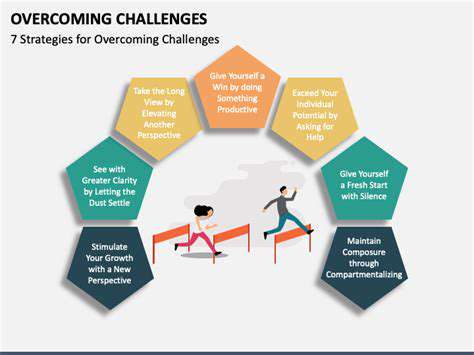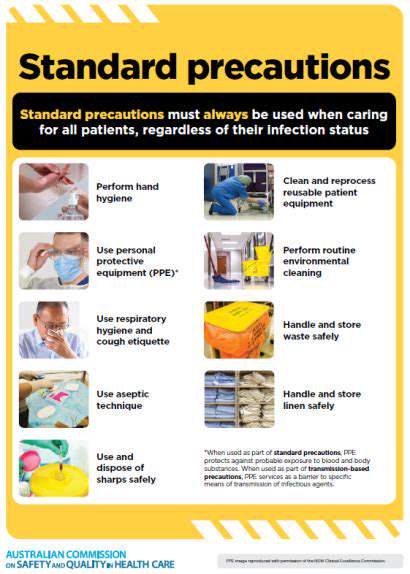Safe and Effective Walking Techniques for Older Adults

Gradual Progression and Listening to Your Body
Understanding Your Body's Signals
A crucial aspect of safe and effective walking is understanding how your body responds to the activity. Pay close attention to signals like muscle fatigue, joint pain, or shortness of breath. These are your body's communication system, telling you when to adjust your pace, rest, or modify your technique. Ignoring these signals can lead to injuries and hinder your progress.
Learning to recognize these signals is a key element of developing a sustainable walking routine. Don't push through pain; instead, listen to your body and adjust accordingly. This awareness will help prevent overuse injuries and ensure that your walking journey is both enjoyable and safe.
Starting Slow and Gradually Increasing Intensity
Begin with a comfortable pace and duration that aligns with your current fitness level. Avoid overwhelming yourself with overly ambitious goals. Gradual progression is paramount for building endurance and preventing injuries. Each session, aim for a slight increase in either duration, distance, or intensity.
For example, if you can walk for 15 minutes comfortably today, aim for 18 minutes tomorrow. This gradual increase allows your body to adapt and strengthen, minimizing the risk of strains and sprains. Consistency is more important than speed or distance in the early stages.
Proper Posture and Technique
Maintaining proper posture during your walk is essential for minimizing strain on your joints and maximizing efficiency. Stand tall with your shoulders relaxed and your core engaged. Keep your head up, looking forward, and your back straight. Avoid hunching or slouching, as this can put undue stress on your spine and neck.
Focus on a smooth, rhythmic stride. Swing your arms naturally at your sides, and ensure that your steps are balanced and controlled, landing midfoot rather than on your heels or toes.
Choosing the Right Footwear
Appropriate footwear plays a significant role in preventing injuries and ensuring a comfortable walking experience. Select shoes that provide adequate cushioning, support, and stability for your feet. Look for shoes with good arch support and a firm heel counter. Consider consulting with a podiatrist or athletic shoe specialist for personalized recommendations, especially if you have any foot conditions.
Regularly inspect your shoes for wear and tear. Replace them when the cushioning and support show significant signs of deterioration. Proper footwear can dramatically improve your comfort and reduce the risk of foot pain during your walks.
Incorporating Rest and Recovery
Rest and recovery are vital components of a safe and effective walking program. Allow your body sufficient time to repair and rebuild tissues after each workout. Rest days are crucial for preventing overuse injuries and promoting overall well-being. Listen to your body's signals and adjust your schedule accordingly.
In addition to rest days, consider incorporating active recovery activities like light stretching or yoga to promote blood circulation and reduce muscle soreness.
Hydration and Nutrition
Proper hydration and nutrition are essential for supporting your body's performance during walks and recovery. Drink plenty of water before, during, and after your walks to maintain hydration levels. Consume a balanced diet to provide your body with the necessary nutrients for energy production and repair.
Listening to Your Body and Adapting as Needed
Throughout your walking journey, pay close attention to how your body responds to each session. Adjust your pace, duration, or intensity based on your individual needs and perceived exertion. If you experience any pain or discomfort, stop and rest. If the discomfort persists, consult with a healthcare professional.
Consistency is key, but your well-being is paramount. Don't be afraid to modify your routine to accommodate your body's needs for optimal health and safety.
Addressing Potential Challenges and Seeking Support

Overcoming Budgetary Constraints
Effective project management often requires a careful allocation of resources, and budgetary constraints can significantly impact the success of a project. Careful planning and meticulous tracking of expenses are crucial for staying within budget. This involves developing a detailed budget that anticipates potential costs and identifies potential cost-saving measures. A proactive approach to cost management, including negotiating contracts and seeking alternative suppliers, can help mitigate the impact of budget limitations.
Identifying and prioritizing essential resources is another critical aspect of managing projects within a budget. Projects often involve multiple stakeholders with varying needs and priorities. Establishing a clear understanding of the project's essential components and allocating resources accordingly can help maintain financial stability and ensure progress. This also includes a detailed analysis of potential risks to the budget to anticipate and mitigate those risks.
Managing Time Constraints Effectively
Time constraints are a common challenge in project management, particularly in fast-paced environments. To effectively manage time constraints, project managers must develop a realistic schedule that considers all tasks and dependencies. This involves breaking down the project into smaller, manageable tasks, assigning deadlines to each, and monitoring progress against the schedule.
A crucial component of effective time management is proactive risk assessment. By anticipating potential delays and developing contingency plans, project managers can proactively address potential roadblocks and maintain a consistent pace. This includes considering potential delays from external factors, such as supplier issues, material shortages, or unforeseen circumstances.
Addressing Resource Conflicts
Resource conflicts, arising from competing demands on shared resources, can significantly impede project progress. Effective project management requires a clear understanding of resource availability and a proactive approach to scheduling and allocation. Identifying potential resource conflicts early on is crucial to prevent delays and ensure smooth project execution.
Implementing robust communication strategies can minimize the impact of resource conflicts. This includes establishing clear communication channels between stakeholders and ensuring that all team members have access to the necessary information. Regular meetings, clear documentation, and transparent communication about resource allocation can prevent misunderstandings and conflicts.
Ensuring Stakeholder Collaboration
Successful project completion often hinges on the collaboration of diverse stakeholders. Understanding and addressing the diverse needs and concerns of stakeholders is vital to ensuring their buy-in and support. This involves actively engaging stakeholders in the project planning process and keeping them informed about progress and potential challenges. Effective communication channels and regular feedback mechanisms are essential to maintain positive stakeholder relationships.
Establishing clear roles and responsibilities for each stakeholder can also foster a collaborative environment. This helps to avoid confusion and ensures that each stakeholder knows their contribution to the project. Clearly defined expectations and responsibilities contribute to a smooth workflow and minimize potential conflicts.











